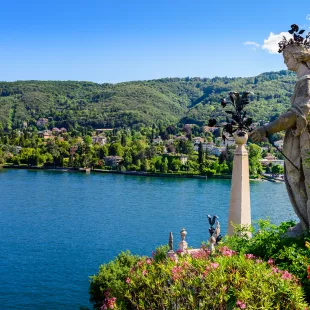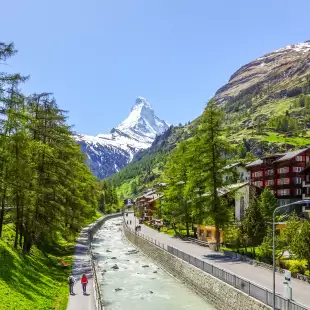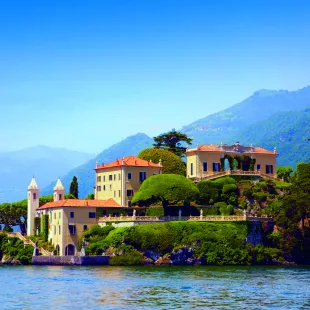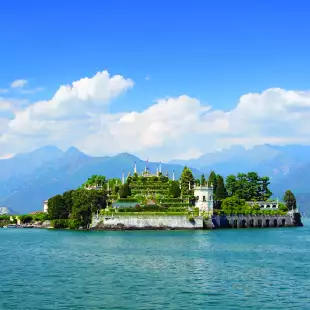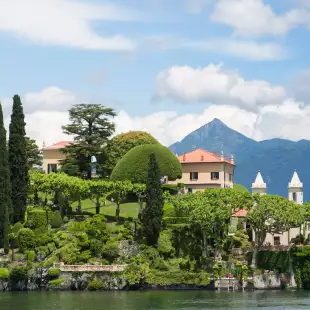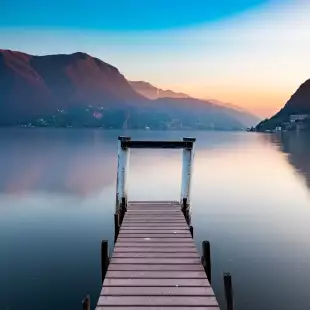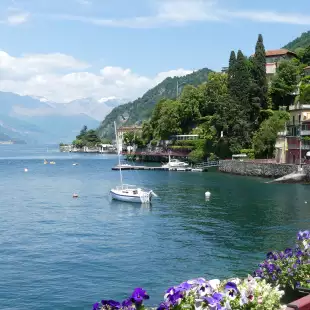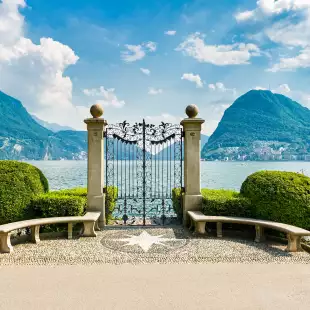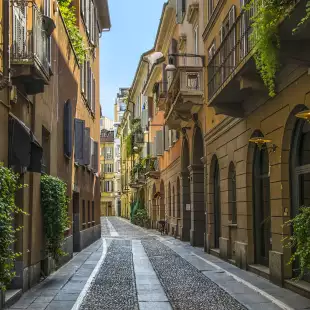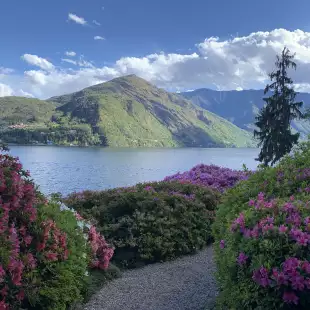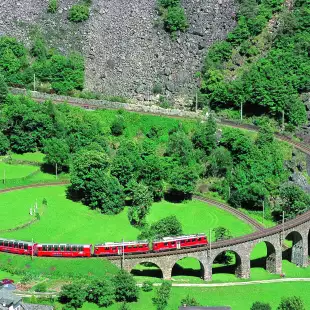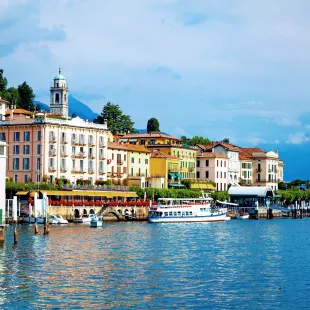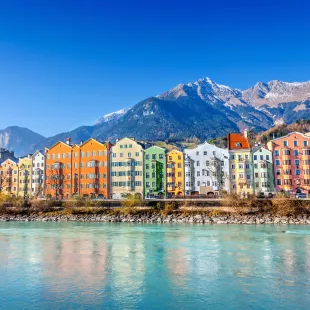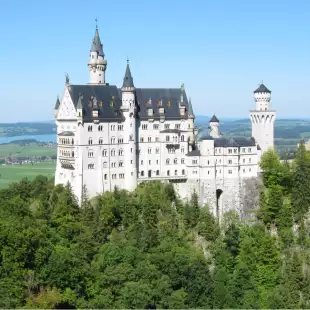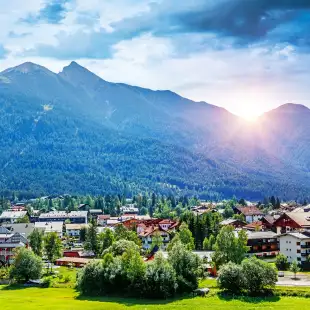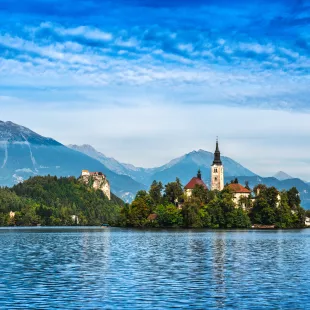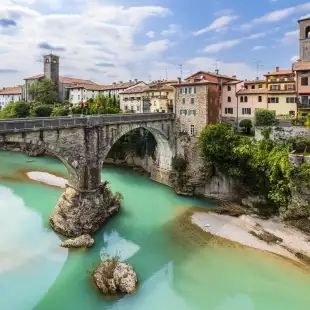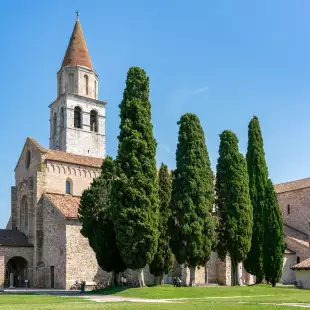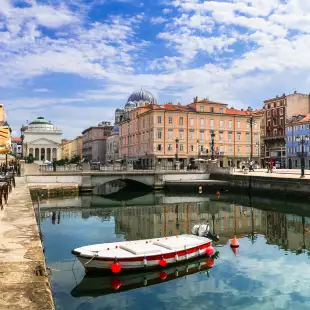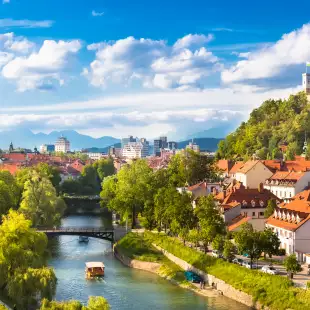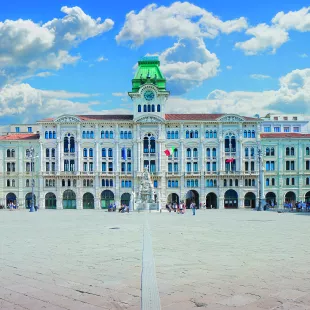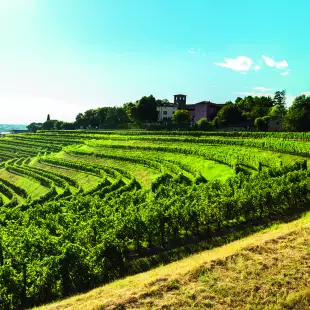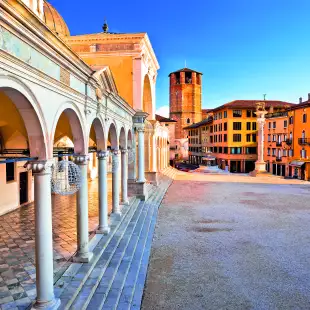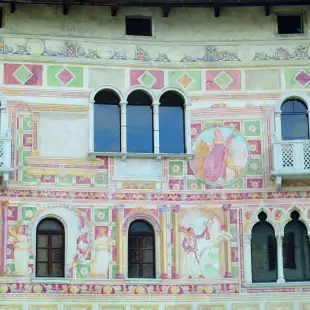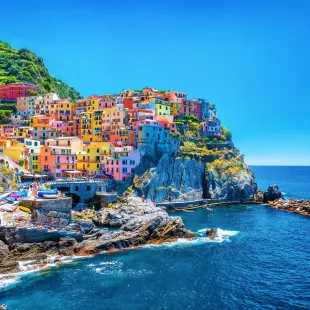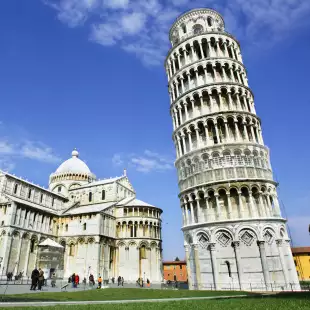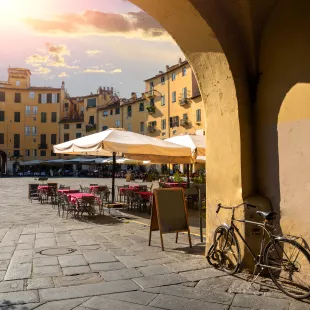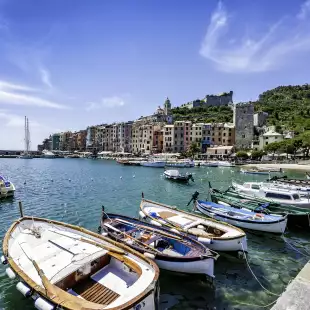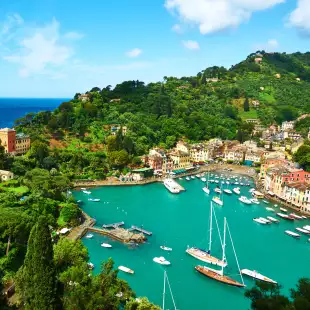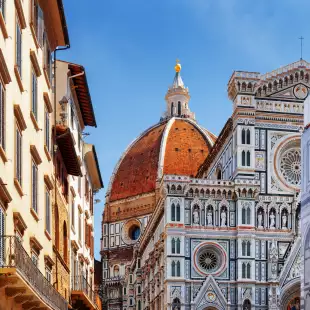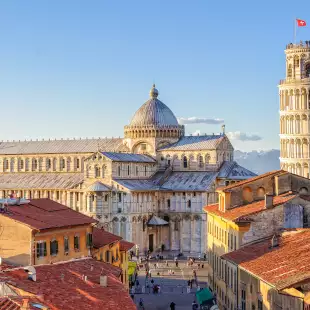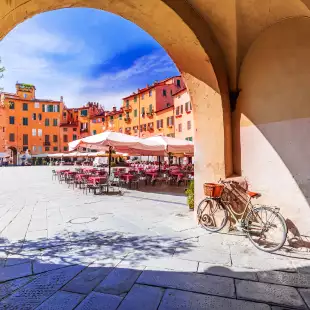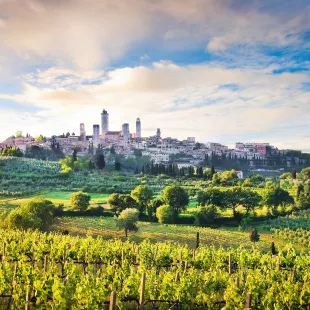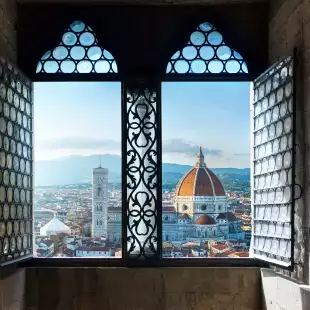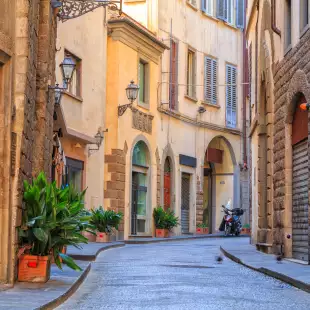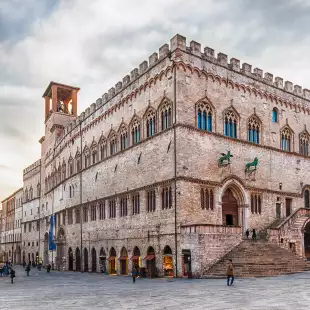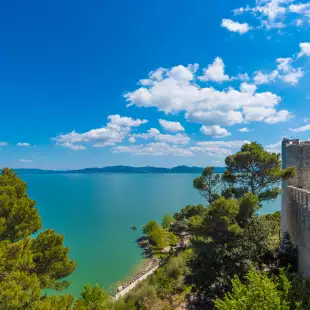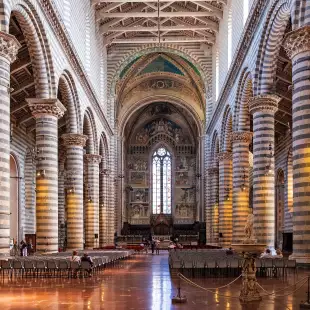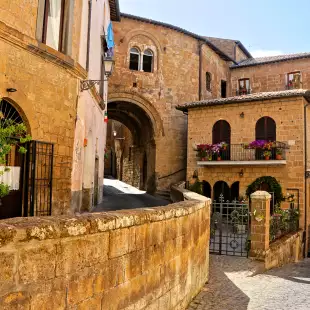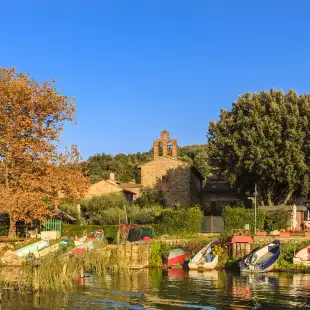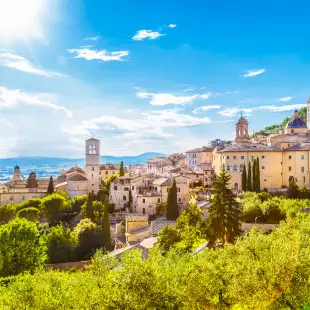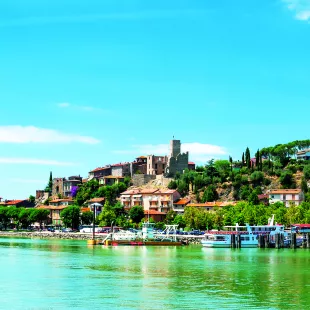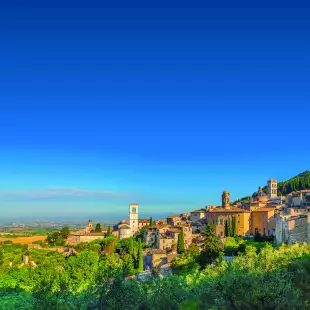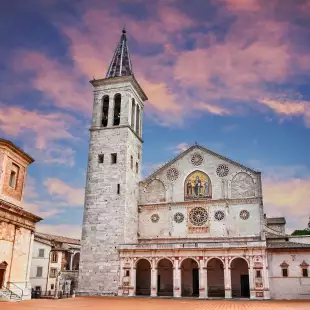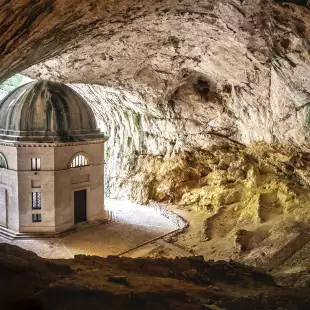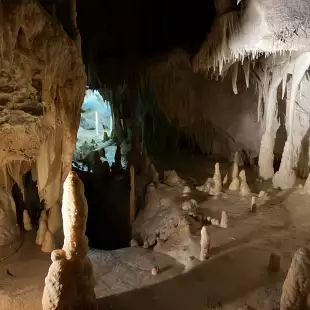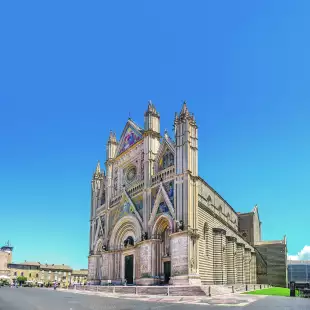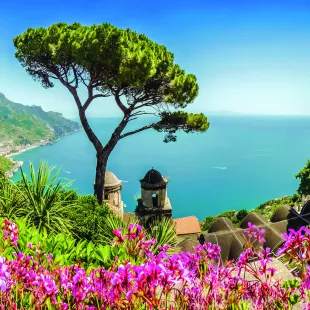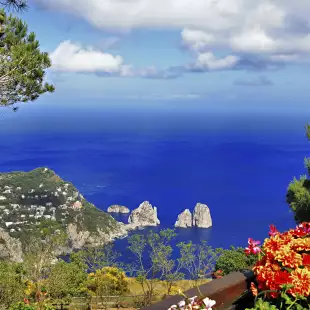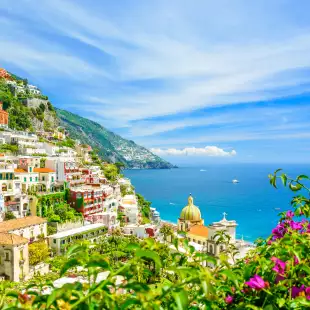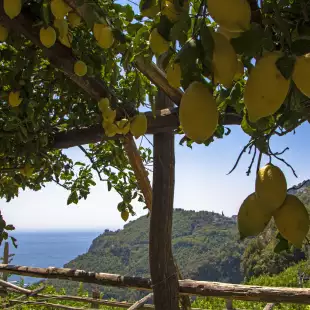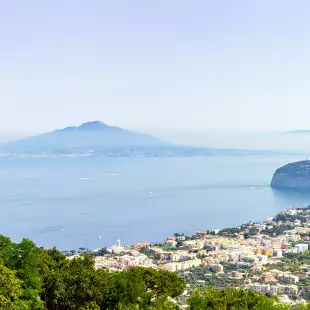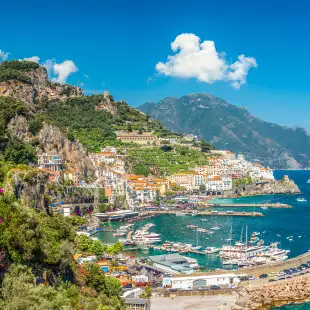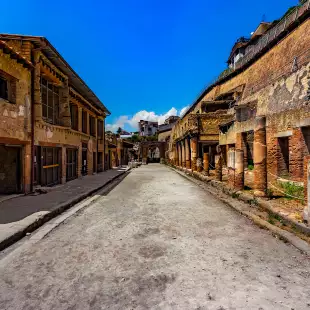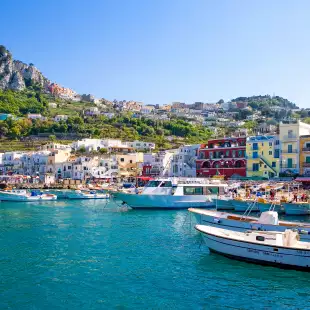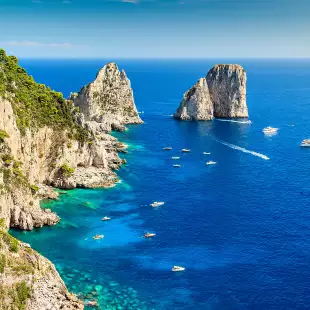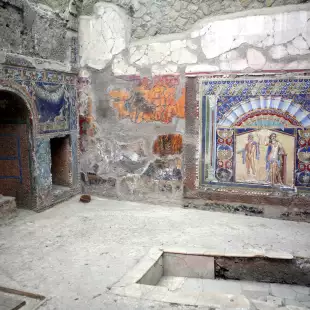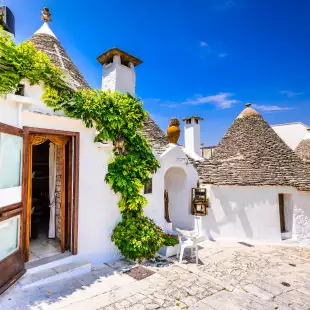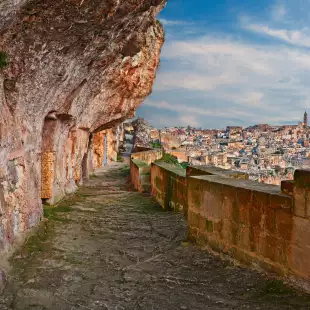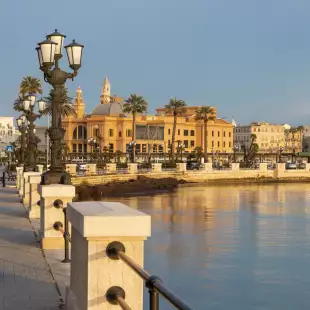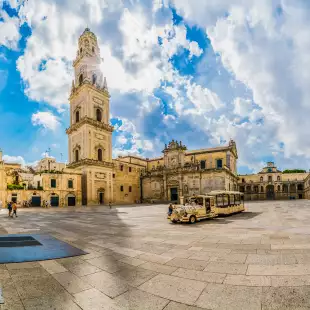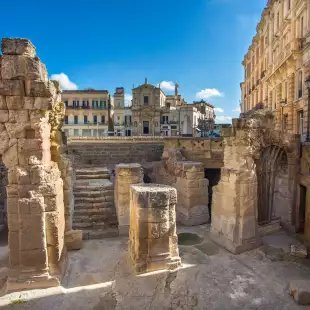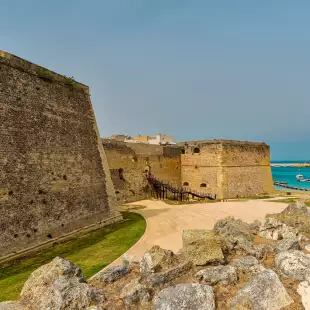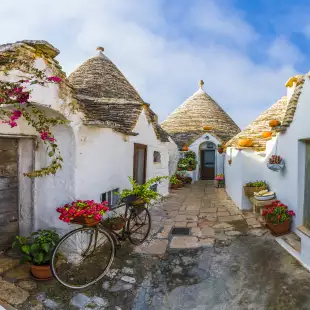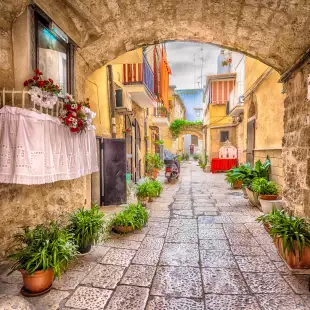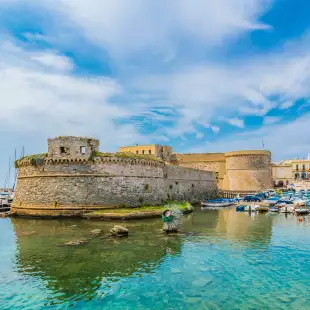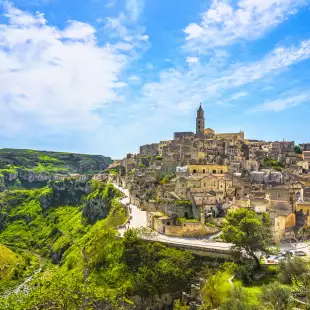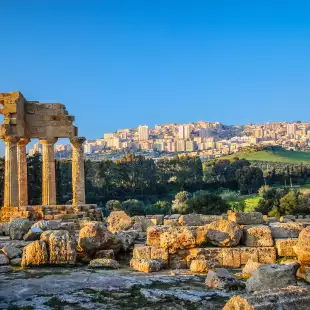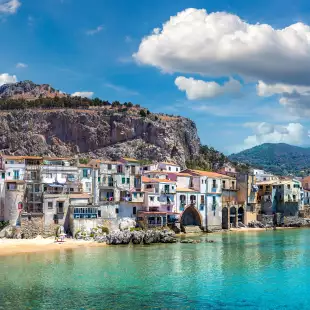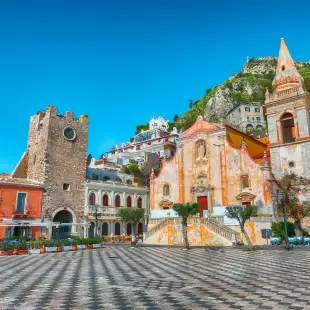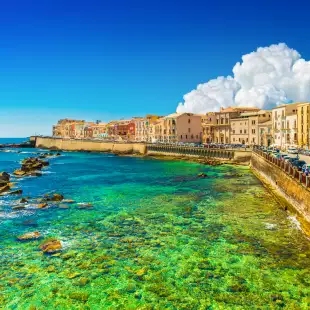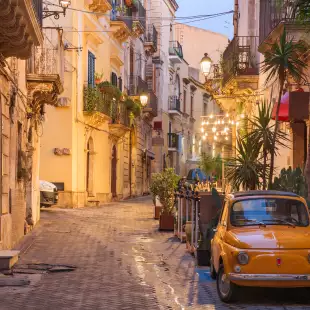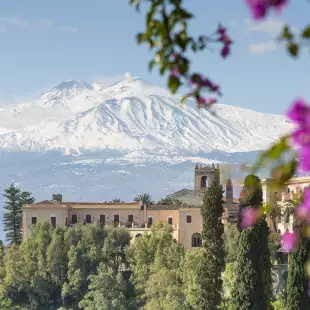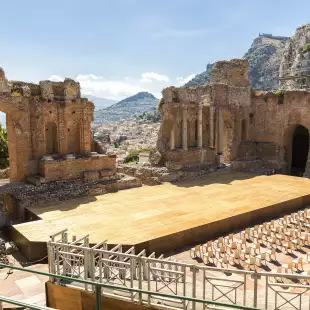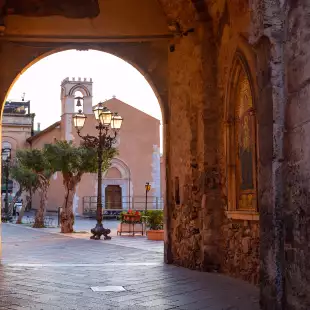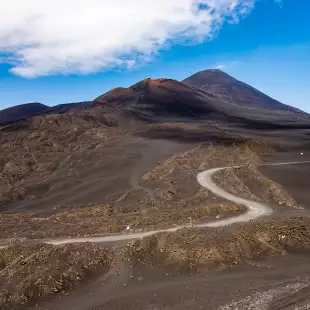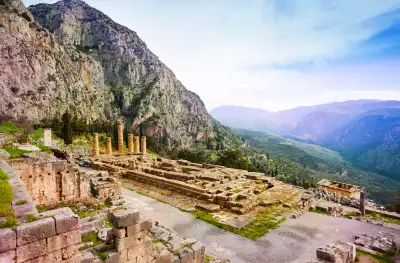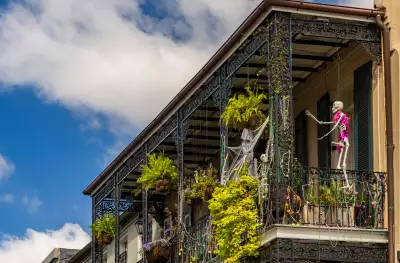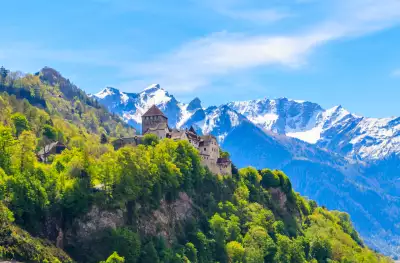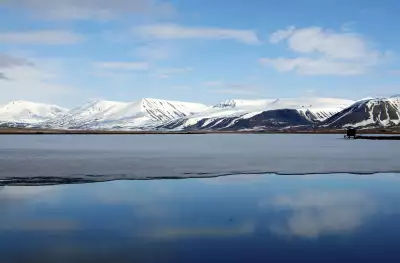Discover Italy: A Traveller's Guide to its Diverse Regions
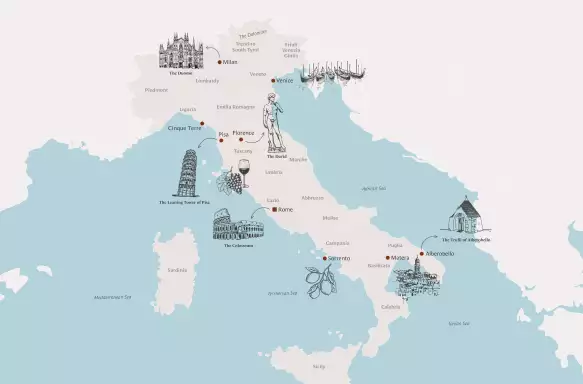
No matter what kind of traveller you are - history buff, foodie, nature lover, or adventure seeker - there’s a corner of Italy waiting to enchant you. From the snow-capped Alps in the north to the sun-drenched shores of the south, each part of Italy has its own story to tell, its own flavours to taste, and its own wonders to discover. There are Renaissance masterpieces to discover in Tuscany, charming coastal villages to explore along the Amalfi coast and culinary delights in every region.
Which region is right for you? Let’s explore Italy, one region at a time!
Regions of Italy
Aosta Valley

The most Northwesterly region of Italy, Aosta Valley, borders Switzerland and France and encompasses parts of the Western Alps, including the Matterhorn, which straddles the Swiss border. Aosta Valley is great for outdoor adventures - such as skiing - and boasts a rich, captivating history, including the Roman town of Aosta.
Piedmont
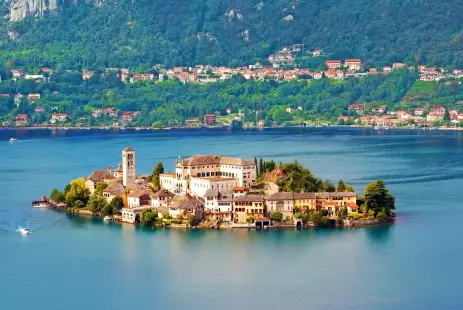
Piedmont is home to the other part of the Western Alps and shares borders with Switzerland and France. However, it's better known for its sophisticated cuisine. Alba, in particular, is known for its white truffles - and several cheeses have Protected Designation of Origin (PDO) status, including gorgonzola. This region also produces some premium Italian wines, from reds like Barolo and Barbaresco to whites like Gavi and Arneis. If you love food and want to explore some lesser-known destinations, Piedmont is the ideal destination.
Piedmont is also home to some of Italy's most beautiful lakes, including Lake Maggiore - which is so big it straddles Piedmont and Lombardy and the Swiss canton of Ticino. A true hidden gem of Piedmont is Lake Orta and the romantic lakeside village of Orta San Giulio - they are one of our favourite Italian destinations with traditional shops and medieval architecture.
Lombardy
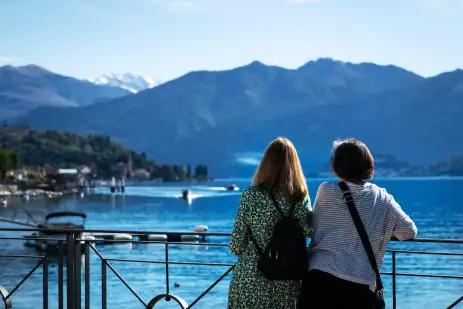
Home to some of the biggest and most well-known Italian Lakes - Lake Como, Lake Garda and Lake Iseo - and dotted with smaller lakes, Lombardy is THE place to go for an Italian Lakes holiday. It offers an idyllic setting to escape the stress of everyday life, bask in beautiful natural surroundings and wander the streets of charming shoreside towns and villages.
Lombardy's capital, Milan, is the perfect blend of history and modernity with grand cathedrals and world-class museums, fashion boutiques and cutting-edge design stores. And, thanks to its territorial variety has one of the highest numbers of PDO and PGI products in Italy - including cheeses, sausages and salami, fruits and vegetables, fish, olive oil and honey - so you can bet the food scene here is world-class.
South Tyrol
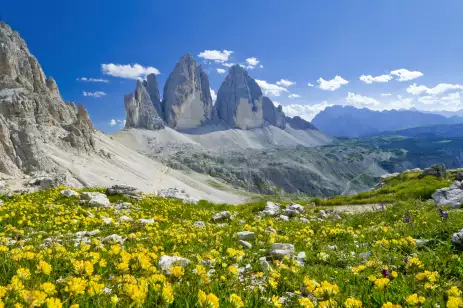
Sharing borders with Switzerland and Austria, South Tyrol is blessed with part of the Dolomites Mountains, crumbling castles, cliff-clinging vineyards and mirror-still lakes. Its larger towns, like Bolzano, Merano and Brixen, offer plenty of vibrancy with lively streets, open-air food markets, bistros, pubs and shops. Bolzano is also home to a 5,300 mystery in the form of the mummified remains of Otzi the Iceman who was murdered high in the Alps with an arrow in his back.
Trentino
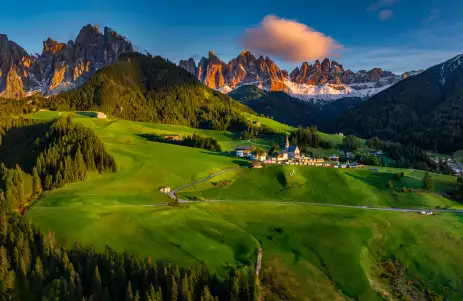
Known for a variety of awe-inspiring natural landscapes - with sprawling forests, wide valleys, lakes and the mighty peaks of the Dolomites - it's ideal for any outdoorsy holidays, skiing in the winter and hiking in the summer. Trentino is a favourite for slow travel taking the time to linger in beautiful villages and savour every square mile of nature.
Friuli
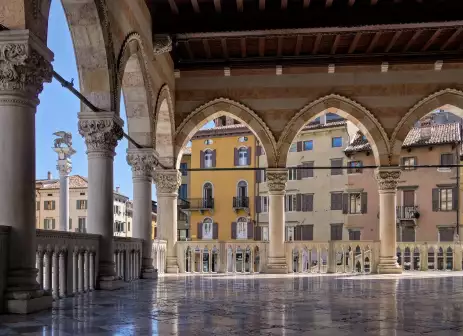
Few places in Italy remain undiscovered, but the tiny region of Friuli Venezia Giulia – known simply as Friuli, to those in the know – is a treasure trove of historic and artistic gems.
Tucked away to the Northeast of Italy, Friuli borders Austria and Slovenia. Friuli boasts enchanting scenery of staggering contrasts from the natural to the historic. The snow-capped Dolomites and the Julian Alps dominate the north of this region, while fertile plains and manicured vineyards sweep down to meet the rugged Adriatic coast. The region’s seaside capital, Trieste, is known as ‘the city of cafés' once hosted literary figures like James Joyce and Sigmund Freud. Beyond the excellent selection of elegant eateries, the region's varied history plays out in its architectural gems, from a medieval castle to a Roman theatre and a cathedral, renowned for its beautiful Byzantine mosaics.
Udine is another enchanting town in Friuli, distinctly influenced by Venetian architecture, with two small medieval canals flowing through its atmospheric centre. In contrast, Aquileia, once one of the largest cities of the Roman Empire, boasts ancient ruins and the Patriarchal Basilica, which features an exceptional mosaic pavement.
Veneto
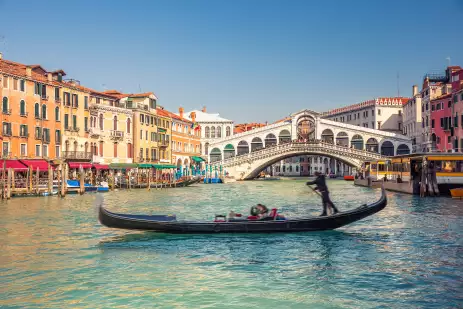
The Veneto needs no introduction. Venice, Verona, Padua and more - there's a reason Shakespeare set so many plays in this region's towns and cities. From elegant cities to quaint villages and breathtaking landscapes, Veneto is home to an immense artistic and historic heritage.
Venice, known as the City of Canals, The Floating City, and Serenissima, is renowned all over the world for art, architecture, and lagoons. Wander the maze of streets, take a gondola on Grand Canals, and see the Doge's palace and Bridge of Sighs.
As the home of Romeo and Juliet, the UNESCO World Heritage City of Verona is synonymous with romance. It boasts Roman ruins, medieval and Renaissance art and architecture, delightful piazzas and bustling marketplaces.
Padua is well-known but often overlooked; by not visiting less-discerning travellers miss one of the most spectacular, and largest, squares in Europe - Prato della Valle - and artistic treasures, like the UNESCO-listed frescoes of the Scrovegni Chapel.
Emilia-Romagna
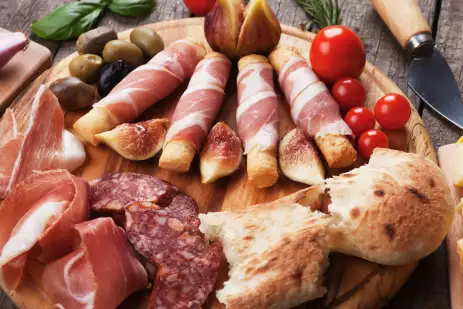
You can thank Emilia-Romagna for giving us balsamic vinegar, mortadella, parmesan cheese, parma ham (all have been awarded PDO status) and ragù alla bolognese - better known to you and me as spaghetti bolognese. Its capital, Bologna, is a foodie haven but it's also so much more than just fresh food markets and Michelin-star restaurants, exploring its medieval old town and near-millennium-old university to its piazzas and iconic arcades is the perfect way to work up an appetite!
To the east, Ravenna, was an important Roman settlement and, after Rome’s fall, it became the last capital of the Western Roman Empire then capital of Ostrogothic and Byzantine Italy. It has no less than eight UNESCO World Heritage Sites constructed in the 5th and 6th centuries.
For more recent history, car enthusiasts might recognise Emilia-Romagna as the home of "Motor Valley", the beating heart of Italian car culture. Moderna was the birthplace of Enzo Ferrari, founder of the luxury car brand; Sant'Agata Bolognese was the home of Ferruccio Lamborghini; Maserati was founded in Bologna by five brothers, and now resides in Moderna; and Pagani, De Tomaso, Dallara, and Ducati also have ties to the region. You'll find museums, factories, racetracks and more to explore.
Liguria
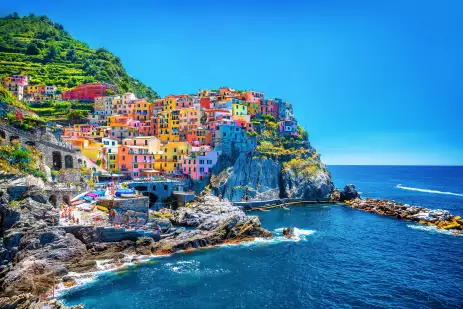
The crescent-shaped region of Liguria is located in northwest Italy. Its Mediterranean coastline is known as the Italian Riviera, with charming seaside villages and secret little beaches - making it ideal for a beach holiday.
Its capital, Genoa - known as 'La Superba' at the height of its maritime power - was one of Italy's four major maritime republics and it is still home to Italy's largest port. Echos of its golden age are still visible in the architectural heritage of its extensive old city, including the city’s main shopping street, Via Garibaldi, and neighbouring Via Cairoli and Via Balbi – known as Strade Nuove (New Streets) - as well as the Gothic San Lorenzo Cathedral.
The coastal town of Portofino is on par with St Tropez as a playground for the rich and famous luring many celebrities and public figures - even Princess Diana visited these glamorous streets.
Another highlight of the Liguria is Cinque Terra, a collection of five picture-perfect fishing villages. Filled with candy-coloured houses perched precariously along the sides of ravines and on top of cliffs, with the sea in front, its beauty Disney's Luca.
Tuscany

While Italy has a rich tapestry of regional identities, it's Tuscany that many consider to be 'typically Italian'. Its traditional Italian culture, simple-yet-flavourful cuisine and patchwork landscape of rolling hills, cypress-lined roads and vineyards. It's the ideal place to go for a quintessential Italian Holiday.
As the birthplace of the Renaissance, Tuscany is home to renowned cities such as Florence, Siena, Pisa, and Lucca, each filled with masterpieces like Michelangelo's David and Botticelli's Birth of Venus, as well as architectural marvels such as the Leaning Tower of Pisa. There's so much to see.
The region boasts 32 PDO and PGI quality agri-food products, including chestnuts, spices, cheeses, and desserts. These local ingredients enhance the flavours of every Tuscan dish. When visiting, be sure to try traditional specialities like bistecca alla Fiorentina (Florentine steak), ribollita soup, and fresh pecorino cheese, all of which perfectly encapsulate the Tuscan culinary experience. They're ideally paired with Tuscany wine - known for ripe red fruits and spices, soft tannins, refreshing acidity and a very long finish - which has been produced and perfected here since the Etruscans.
Marche

Marche is a little off the beaten track for most tourists, making it the ideal place to go for a quiet and authentically Italian holiday. In each tiny village and charming town, you'll be able to feel the local soul.
It is known for its diverse landscapes, including beautiful beaches of the Adriatic, rolling hills, and towering peaks of the Umbria-Marche Apennines and the Sibillini Mountains. While the cities and sights here are not well known, there's one sight here that should not be missed: The Frasassi Caves. Discovered in 1971, this massive cave system is home to breathtaking stalagmites and stalactites. Located at the entrance of the Frasassi Caves is the Temple of Valadier a nineteenth-century domed marble temple, a pilgrimage site for absolution.
Umbria
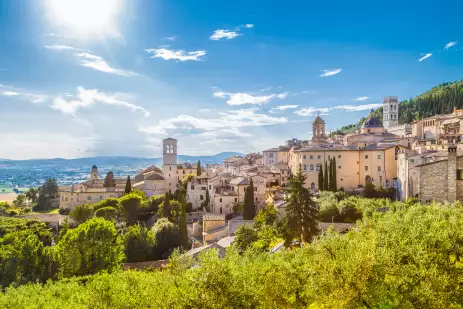
Umbria is landlocked between Tuscany, Rome and Lazio. Known as the 'Green Heart of Italy', its hills and mountains are carpeted by dense forests and vineyards. It's also home to Italy's fourth-largest lake, Lake Trasimeno.
As a less tourist-heavy destination, Umbria allows you to enjoy authentic local experiences. There are plenty of opportunities to lose yourself around its charming villages and savour mouth-watering cuisine. Umbria produces more truffles than any other region of Italy, and they put them on lots of dishes - pasta, antipasti, crostini and even scrambled eggs.
This region also boasts the highest concentration of medieval towns in Italy, like the Umbrian capital, Perugia. Split into upper and lower town, Perugia is connected by a series of elevators and escalators. The modern lower city stretches across the Tiber River valley, while the historic core is draped over the ridges of the Apennine Mountains. The upper town resembles a museum, featuring a well-preserved medieval centre that appears untouched by modern life. Cobbled alleys wind their way past Gothic palazzi, leading to piazzas surrounded by solemn churches.
It's also home to a famous site of pilgrimage, Assisi. As the birthplace of Saint Francis, and Saint Catherine of Siena, it's deeply intertwined with Catholicism which has influenced its history and art to the point where the three are inextricably linked with beautiful religious iconography displayed in frescos, statues and paintings bejewelling the Basilica and other churches.
Umbria is the ideal location for travellers interested in history, religion and food!
Lazio

Many come to Lazio to visit Rome, but Lazio is so much more ideal for history buffs, foodies, or nature lovers.
Lazio, the heart of Italy, is home to Rome - the Eternal City - one of the oldest cities in the world. It's seen empires rise and fall and today, it's a heady mix of Roman ruins, Renaissance art and vibrant street life. It draws in millions of visitors every year ready to marvel at the Colosseum, explore the ruins of the Roman Forum, toss a coin into the Trevi Fountain, and step inside the incredible Pantheon. At the epicentre of Rome is Vatican City - the world's smallest sovereign state, head of the Catholic Church and home to St. Peter's Basilica and the Sistine Chapel.
Step outside this region's crown jewel and you'll find a treasure trove of medieval villages and towns - like Tivoli with its UNESCO-listed Villa d’Este and Villa Adriana - and natural beauty, from lakes to coastal escapes.
This region is known for its pasta dishes, traditional meats and wines. While you're here, we recommend trying authentic carbonara, cacio e pepe (pasta dish with pecorino and black pepper) and porchetta (Roasted, herb-stuffed pork) paired with local wines, such as Frascati - a crisp white wine - or Cesanese - a bold red.
Abruzzo
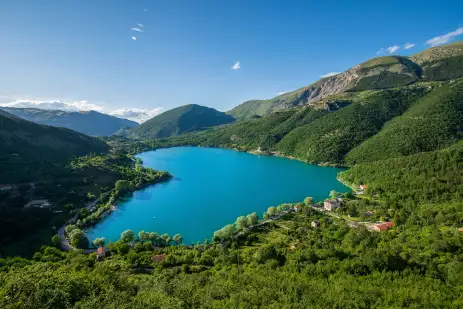
Abruzzo is often called the “Green Region of Europe” because nearly half of its land is protected as national parks and nature reserves. It's one of Italy’s best-kept secrets - a region where rugged mountains meet the Adriatic coast, medieval villages dot the landscape, and traditional Italian culture thrive. L’Aquila, the region's capital, is full of history, with beautiful Renaissance churches and the impressive Forte Spagnolo fortress. Other places of interest include Sulmona - birthplace of the Roman poet, Ovid - and the heart-shaped Lake Scanno - a favourite for photographers.
Molise
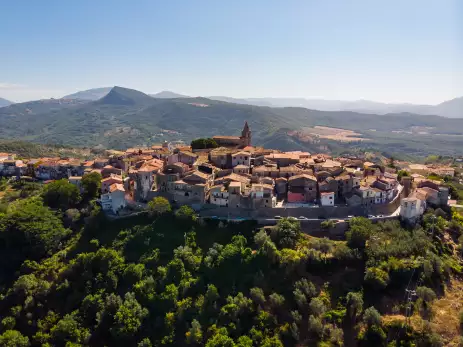
Molise is so unknown that there's a joke among Italians: "Molise non esiste" (Molise doesn’t exist). Its small size and relative obscurity hide medieval towns like Isernia, one of Italy’s oldest settlements; Fornelli, which is also known as "the town of seven towers" thanks to the seven towers of its defensive walls; Sepino, home to the fascinating Roman ruins of Saepinum; and Agnone, which has been producing bells for the Vatican for over 1,000 years. There's 35 km of coastline to explore with charming seaside towns and beautiful beaches and rustic, flavourful foods - Scamorza Cheese, a Spicy, slow-cooked pork called pampanella and cavatelli, the region's signature pasta.
Campania
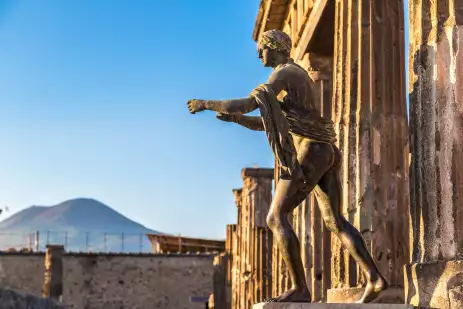
Campania, one of Southern Italy's most captivating regions, is best known for the breathtaking Bay of Naples. As you wander down Spaccanapoli, a narrow street cutting through the historic centre of Naples, you'll feel the vibrant pulse of life, surrounded by magnificent churches and charming shops.
This remarkable region is steeped in history, with the legendary ruins of Pompeii and Herculaneum standing as poignant reminders of the eruption of Mount Vesuvius in AD 79. These incredible sites allow visitors to journey back to the time of Roman rule, where vibrant frescoes and well-preserved wooden structures tell stories of a bygone era.
The Amalfi Coast is a captivating destination famous for its dramatic cliffs and colourful villages. It offers a paradise where the pastel-coloured houses of Positano and the luxury boutiques engage the senses and inspire the spirit. Along its shores, you can explore Amalfi, a historic town featuring a stunning cathedral and vibrant piazzas; Ravello, known for its breathtaking gardens and villas, such as Villa Cimbrone and Villa Rufolo; and Furore Fjord, a hidden beach nestled between steep cliffs, which provides a perfect spot for a peaceful escape. And just off the coast picturesque islands like Capri, Ischia and Procida, each with their own unique atmosphere.
Campania is the birthplace of some of Italy's most beloved foods. Here you should tuck into a pizza Napoletana, made in a wood-fired to produce its signature soft thin dough with high edges. You could try Mozzarella di Bufala (Buffalo mozzarella) made from the Italian buffaloes that graze on Camaldoli Hill or tuck into a bowl of Pasta alla Genovese. After the meal, why not raise a glass of Limoncello - made with fresh Sorrento lemons - to another day in paradise?
Apulia
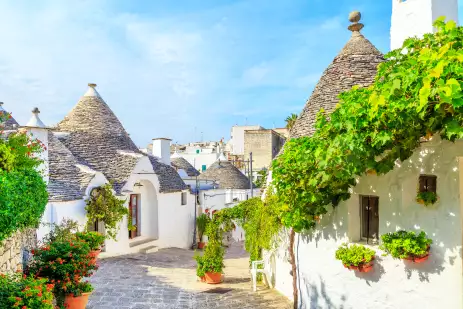
Apulia - also known by its Italian name, Puglia - is one of the southernmost regions of Italy, located in the heel of the boot. It boasts over 800km of coastline featuring sheer cliffs, rocky coves and golden sandy beaches overlooking the crystal-clear waters of the Adriatic and Ionia Seas. Its coastal capital, Bari, seamlessly combines a historic, maze-like old town with scenic promenades and charming beaches.
In addition to its coastal landscapes, Apulia is home to fascinating natural features, such as the underground caves of Grotte di Castellana and the Gravina di Puglia ravine, which is dotted with historic remnants, including ancient cave dwellings and Roman bridges.
Inland, you'll find the Itria Valley, characterized by rolling olive groves and, beautiful white-washed villages like Ostuni, known as the "white city" for its dazzlingly white buildings. In towns like Alberobello, you'll find the UNESCO-recognised trulli - white, cone-roofed stone houses that look like something out of a fairy tale. These structures are interwoven with the fabric of the community and are used as shops, cafes and homes.
Another unmissable historical site is the UNESCO World Heritage Site, Castel del Monte, a unique masterpiece of medieval architecture known for its unusual octagonal shape. Also worth a visit is the Egnazia Archaeological Park, which contains the remains of the ancient city of Gnathia, originally occupied by the Messapians before it became Roman.
Basilicata
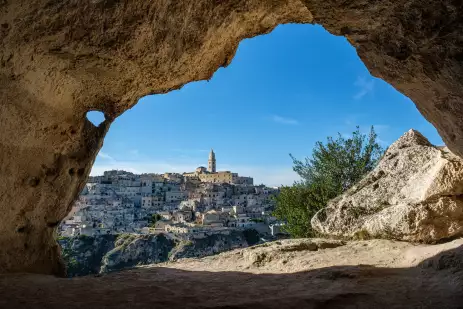
Nestled between Puglia, Campania, and Calabria, Basilicata, one of Italy’s least-known and most mysterious regions. Much of its charm lies in its unusual towns and villages.
Matera, one of the world's oldest continuously inhabited cities, is famous for its prehistoric cave homes, carved into limestone rock. Many of these have been transformed into boutique hotels, restaurants, and museums making for an interesting stay in this ancient town.
High in the Dolomiti Lucane mountains is the fairytale village of Castelmezzano. The buildings in this medieval village look like it’s carved into the cliffs connected by a network of steps, intricate alleys and shady passages. It's surrounded by a harsh, rugged landscape giving it a remote atmosphere, untouched by tourists.
The medieval ghost town of Craco was evacuated due to landslides - has gained a new lease of life as a fascinating open-air museum and movie set - blockbuster films like The Passion of the Christ and Quantum of Solace. While it's only partially open to the public, on a guided tour, peer through the windows of the abandoned houses and you'll see tables and chairs still left in the same position as they have been for over 60 years - the entire town feels frozen in time.
Calabria
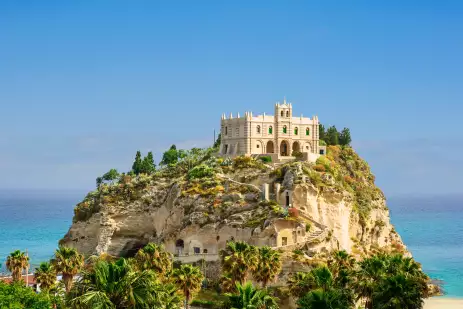
The toe of the boot, Calabria, is ideal for travellers looking for an authentic, off-the-beaten-path Italian experience with dramatic coastal and mountain landscapes and fewer crowds. Encased on three sides by the Ionian Sea to the east, the Strait of Messina to the southwest, and the Tyrrhenian Sea to the west, Calabria has over 800km of coastline.
Stay in seaside towns like Tropea - Pearl of the Adriatic - where you can relax on the sandy beaches, wander its charming historic centre, see its cliffside houses and visit the Sanctuary of Santa Maria dell’Isola. Visit the fishing village of Scilla, the mythical home to the sea monster Scylla, who terrorized sailors in Homer's Odyssey. Or taste its bold, spicy flavours and fresh seafood - spicy ‘Nduja sausage, grilled swordfish or the liquorice of Rossano (which is some of the best in the world).
Sicily
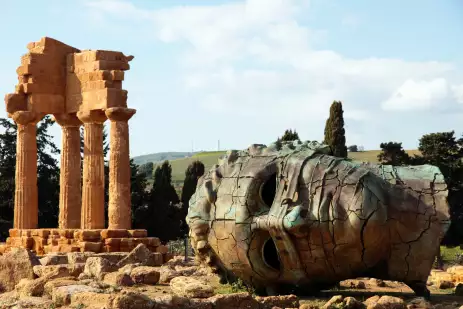
Sicily is the largest island off the coast of Italy with sandy beaches, medieval towns, and dramatic landscapes, making it a popular destination for filmmakers and travellers alike. Its rich history has been shaped by multiple civilizations, including the Greeks, Romans, Arabs, and Normans, resulting in a unique cultural blend seen in its architecture, language, and cuisine. Visitors can explore charming cities like Palermo, Taormina, and Cefalù, marvel at ancient sites like the Valley of the Temples, and enjoy delicious Sicilian specialities such as arancini and fresh seafood. With breathtaking scenery, vibrant festivals, and a mix of historical influences, Sicily is a must-visit destination for those seeking adventure, culture, and relaxation.
To find out more about this stunning Italian island, read our Sicily travel guide.
Sardinia is known for its crystal-clear waters, rugged mountains, and charming coastal towns, making it a paradise for nature lovers and beachgoers. With a history influenced by the Nuragic civilization, Phoenicians, Romans, and Spanish, Sardinia boasts a unique culture, seen in its ancient ruins, distinct dialects, and rich culinary traditions it offers an experience that's unique from mainland Italy. Visitors can explore historic cities like Cagliari and Alghero, discover the fascinating Nuraghe stone structures, and indulge in local specialities such as porceddu (roast suckling pig) and seadas (honey-drizzled pastries). From the stunning Costa Smeralda to the wild landscapes of the Supramonte, Sardinia offers an unforgettable mix of history, culture, and natural beauty.

